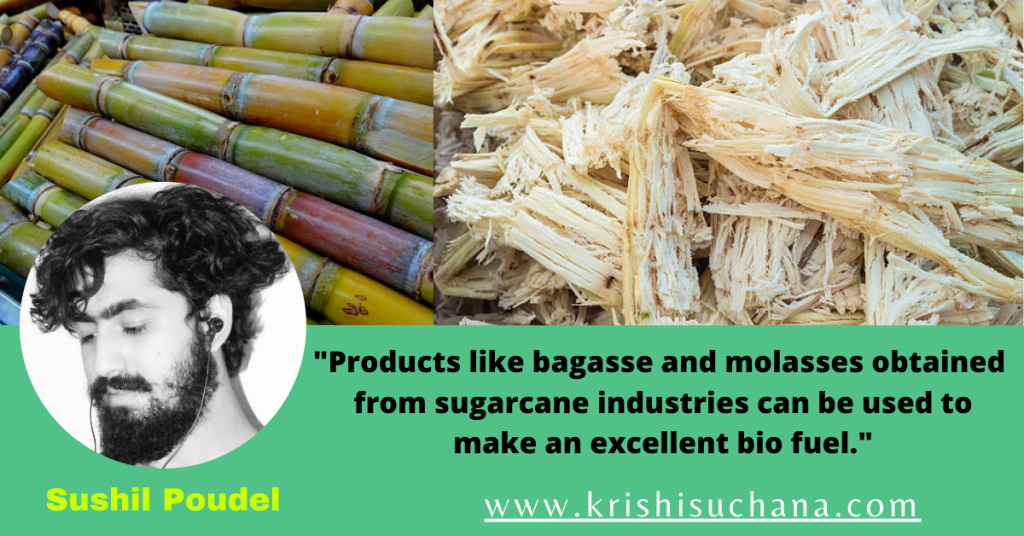Can Nepal reduce petrol import utilizing sugarcane bagasse?

Sugarcane is the most important commercial crop of Nepal. Sugarcane grows in tropical and sub tropical climate. In primary growing regions across the Terai and lower hills of Nepal, sugarcane crops can produce over 15 kg/m2 of cane if all requirements meet. Sugarcane is the main source of producing sugar in whole world.
In developing nation like ours sugarcane is the most economical source of nutrition, and by products like bagasse and molasses obtained from sugarcane industries can be used in various ways. Molasses is mainly used in distilleries for the manufacture of alcohol and bagasse is used for producing bio fuel (by fermentation) or directly as bio fuel by burning it. Brazil use bagasse as the main raw material to produce cellulosic ethanol, which is later blended with petrol.
Bagasse is the dry fibrous residue that remains after sugarcane stalks are crushed to extract their juice. For every 10 tonnes of sugarcane crushed, a sugar factory produces nearly three tonnes of wet bagasse. Since bagasse is a by-product of the cane sugar industry, the quantity of production in each country is in line with the quantity of sugarcane produced.
A typical chemical analysis of washed and dried bagasse might show
- cellulose 45–55 percent
- hemicelluloses 20–25 percent
- lignin 18–24 percent
- Ash 1–4 percent
- Waxes <1 percent.
The majority of cellulosic ethanol, which is used as bio fuel is manufactured from waste biomass, especially sugarcane bagasse. To be converted into biofuel, lignocellulosic biomass must be pretreated and then hydrolyzed with acid of enzymes to break the cellulose into simple sugars. Those sugars then undergo microbial fermentation to produce ethanol, which is distilled to a purity of about 95 percent. Cellulosic ethanol can also be produced through gasification, which results in a gas mixture of hydrogen, carbon monoxide, and carbon dioxide, which is then fermented or chemically catalyzed into ethanol.
Ethanol is blended with petrol to make an excellent bio fuel. Brazil produce 11.7 billion litre of ethanol to run 65 million vehicles per year. Five to ten percent of ethanol can be blended with petrol, which can run engine smoothly without any modification. Brazil had blended up to 22% of ethanol with petrol obtained from fermentation of bagasse and other sugarcane by products.
Nepal is importing more and more petroleum products year by year.
If Nepal government formulate plans to produce ethanol and use it as bio fuel to blend with petrol, billions of Nepalese currency could be saved. As Nepal has potential in production of sugarcane to meet the requirement.
Writer: Sushil Poudel (College: Gauradaha Agriculture Campus, Jhapa)

